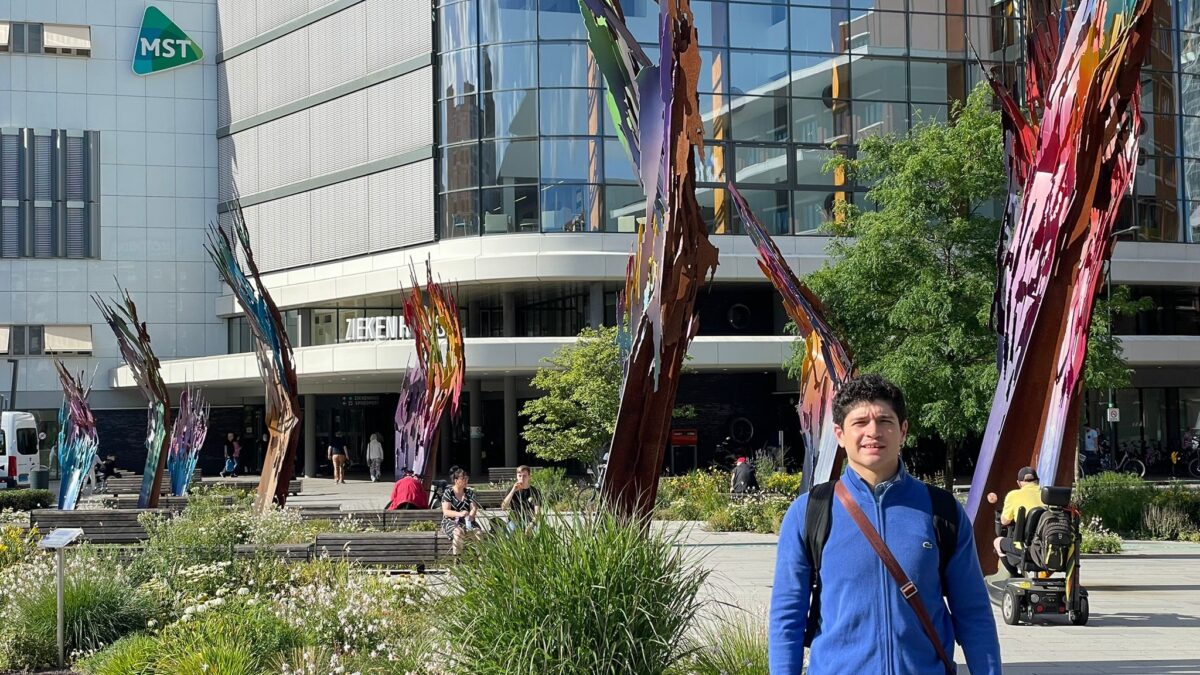It was around nine ‘o’clock in the morning when I stepped into the hospital Medisch Spectrum Twente (MST). Very early in the morning, for my Latin being a bit too early if you ask me, my colleague, Nandun, and I had taken the train to Enschede. Despite my sleepy face, I felt excited to visit the MST hospital, see how the MRI systems are used in practice, and how they look in the destination they are developed for. Also, this trip was a nice change of scenery from the labs at Philips and all the theoretical articles I’ve been reading for months now at home.
Nandun and I were kindly received by dr. Ir. B. van den Berg, the general clinical physics of the department of Medical Technology. She greeted us with a warm smile and led us to a room for an introductory presentation about the hospital’s facilities and its risk management. It was impressive to hear about the immense complexity of risk management in the hospital. The Medical Technology Department manages over 16.000 pieces of medical equipment, which require strict reporting for incidents and maintenance.
After the introduction, dr. Ir. B. van den Berg gave us a tour of the facilities. She explained that this hospital is interested in the introduction of new technology and how it influences risks. I remember her wondering: “How do we know the risks of electromagnetic interference in different locations at the hospital? And what kind of devices are more vulnerable to new risks”? Those questions reminded me precisely of the challenges ETERNITY aims to tackle.
When she introduced us to the heliport, my EMC senses were highly activated in a second. A helicopter produces electromagnetic disturbances, which might affect the medical equipment, my brain responded intrigued. Interesting to keep in mind for my research! (Take a look at our ITN ETERNITY Video to understand better what I mean).
This visit to MST was an excellent opportunity to better understand the importance of the ETERNITY project. In my research, I focus on novel methods to manage EMI risks. This will help to introduce new technology without disturbing the already installed equipment, such as MRI systems.
Being inside the hospital as a Ph.D. researcher and not as a patient helped Nandun and me prepare better for our research. We realized we should assess all the implications of performing measurements in a clinical environment:
- Precise technical details of the measurements
- Position of test setups inside the hospital;
- Continued safety of patients when performing testing.
First, the precise technical details must be planned upfront. It is not possible to quickly get that one cable you forgot from another lab. Second, MST is zoned according to the ‘procedures’ severity. In some zones, external devices are prohibited to connect to the hospital mains outlet due to strict current leakage requirements. Third, patients must feel safe inside a hospital. Patients are in a vulnerable position, and performing EMC measurements should never disrupt the feeling of safety.
I am eager to start my research at MST and make the next step in accomplishing the objectives of ETERNITY. Stay tuned to learn more about our research and the valuable results.
I want to thank dr. Ir. B. van den Berg for her warm welcome and introduction to the hospital.


